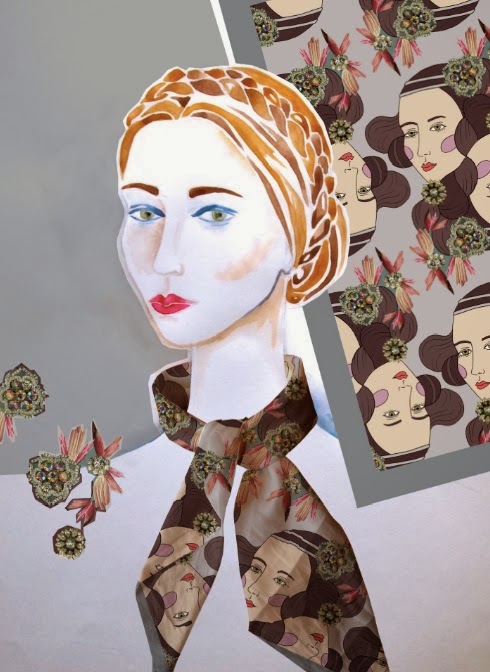I thoroughly enjoyed the Locating unit and I think in general my work has greatly improved since the Intentions unit. It was during the last unit that I finally mastered Photoshop, but during this project I have developed on those skills and feel I can now define myself as a digitally-based designer. In this unit I have tried to focus on where I see myself in the design world, which is why I chose to do a project for fashion. Although I was designing my prints for Hermes, I also tried to treat the project as if I was a freelance designer, hence why I felt it was important to manufacture an example product and to consider its presentation, to prove (if only to myself) that I was capable of producing a professional looking item.
I feel in this project there was a strong theme that continued throughout - dressing up and historical costume was always the underlying theme, but exotic birds was the recurrent motif and inspiration. Now that I am very much at ease with Photoshop, I enjoyed pushing my skills of digital collage by combining photography and illustration. All the way through, context has been extremely important, as it has influenced every part of the designing process. I think having a clear vision of the end market, and also colour theme, helped me to create a coherent final collection.
While my personal project was very self indulgent, I benefitted from the challenge of the two live projects. For the Tigerprint brief I created butterfly based designs for a female audience, making sure to create prints that would be suitable for Marks and Spencers. In the Patternmash brief I absorbed all the inspiring images for the 'Midwinter' theme to create scandinavian inspired illustrations which were featured on the blog. I really enjoyed discussing my work with Hannah, the ex-Manchester student who runs the web site, and I am going continue to submit work to every monthly theme, hopefully building publicity for my work. Doing the live briefs has taught me about working to a short deadline and also the importance of taking on work outside my university projects, and I look forward to creating my prints for the Art House Co-op Print Exchange.
All in all, I have tried to create a slick and professional body of work and focus on the future of my practice. I am looking forward to participating in Unit X and working on the ideas I have developed in this project.


















